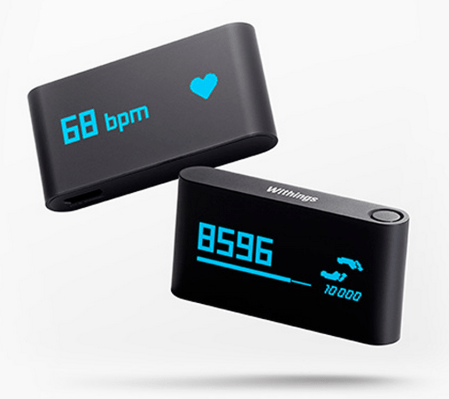And the battle to build quantified self gadgets rages on. The newest entrant is one that isn’t exactly new to the space — Withings has been churning out smart scales and body analyzers since 2009, but it recently decided to set it sights on Fitbit and Jawbone with a new, $99 wearable fitness tracker called the Pulse.
The particulars should sound familiar: the Pulse is a tiny (it weighs in at 8 grams) thing with a touch-sensitive OLED display that’s worn on your person and measures the steps you’ve taken, calories you’ve burned, and how long you’ve slept. Oh, and to top it off, you can press your finger to the Pulse’s rear end to figure out your heart rate. Neat trick.
Familiar though that formula may be, Withings brings something rather neat to the table though: a hardware ecosystem (if a small one). The company’s background in smart scales means it’s capable of adding some crucial context to the activity data the Pulse is able to collect — a more accurate picture of a person’s fitness level and the effect it actually has on the body. Media darling Fitbit has so far struck to a similar strategy, albeit one that ran in reverse — the company spent years honing its Fitbit wearables before releasing the Aria scale in 2012.
That said, Withings is no stranger to cooperation with other quantified self players either. Companies like Fitbit and Jawbone have made it a point to partner with Withings so they can incorporate weight data into users’ accounts. It’s a natural fit considering that a person’s weight represents a crucial bit of information that those company’s respective gadgets can’t really figure out on their own.
Honestly though, for a company that’s been nothing if not eager to add value to other wearable gadgets, it’s a little strange to see Withings take a shot at the market themselves. These days it seems like nearly every fitness-focused company is trying reinvent to the pedometer, but it takes some serious expertise to turn a pint-sized selection of sensors and components into a product worth using. The development process may have been a bumpy one too — Withings first showed off that activity tracker (encased in Plexiglass no less) back in Las Vegas at CES 2013, and here we are about five months later with only the option to pre-order the thing.
For all the question marks that come with the Pulse, Withings may actually be onto something here. If the company can nail the experience of aggregating data across its hardware lineup and feeding it all into its accompanying app (not to mention the 100 or so partner apps floating around out there), Withings may just be able to pull ahead of a sizable pack.
